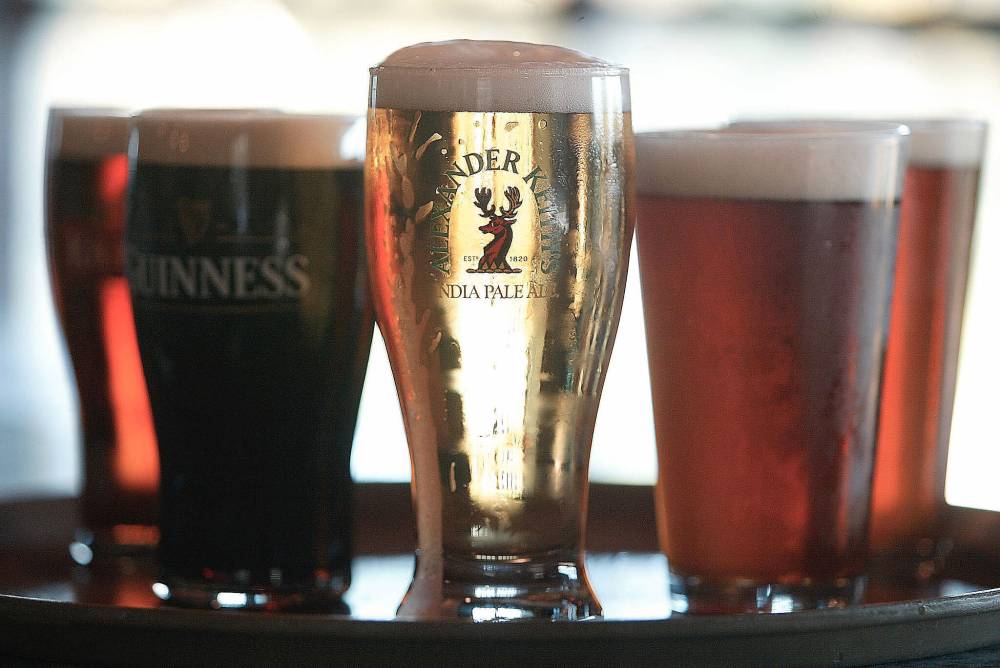Canadian brewers struggle to stay afloat
Advertisement
Read this article for free:
or
Already have an account? Log in here »
To continue reading, please subscribe:
Monthly Digital Subscription
$0 for the first 4 weeks*
- Enjoy unlimited reading on winnipegfreepress.com
- Read the E-Edition, our digital replica newspaper
- Access News Break, our award-winning app
- Play interactive puzzles
*No charge for 4 weeks then price increases to the regular rate of $19.00 plus GST every four weeks. Offer available to new and qualified returning subscribers only. Cancel any time.
Monthly Digital Subscription
$4.75/week*
- Enjoy unlimited reading on winnipegfreepress.com
- Read the E-Edition, our digital replica newspaper
- Access News Break, our award-winning app
- Play interactive puzzles
*Billed as $19 plus GST every four weeks. Cancel any time.
To continue reading, please subscribe:
Add Free Press access to your Brandon Sun subscription for only an additional
$1 for the first 4 weeks*
*Your next subscription payment will increase by $1.00 and you will be charged $16.99 plus GST for four weeks. After four weeks, your payment will increase to $23.99 plus GST every four weeks.
Read unlimited articles for free today:
or
Already have an account? Log in here »
Hey there, time traveller!
This article was published 13/09/2022 (1166 days ago), so information in it may no longer be current.
With recent reports that people are out enjoying the weather, we could assume that everything is back to normal after the pandemic. But that’s not entirely true, especially for the beer industry. Total beer sales have dropped 7.3 per cent from last year, according to Beer Canada.
Total beer sales are up in Newfoundland and Labrador by a whopping 20.1 per cent. But in other provinces, sales for retail and service have dropped significantly.
The largest drop this year has been in Quebec, where beer sales have dropped 13.3 per cent compared to last year. Sales have declined in Saskatchewan by 12.6 per cent and by 10.7 per cent in Alberta. Consumption in all areas of the country has fallen, except for the Territories.

FILE - Ruth Bonneville/Winnipeg Free Press
Inflation, changing consumer tastes and a post-pandemic reluctance to gather in public places have combined to send beer sales in Canada on a downward trajectory.
In the beer business, a simple one per cent drop is massive, so declining by 3.3 per cent in Ontario is considered a disaster. These drops are in addition to a disastrous 2021 when lockdowns were the norm to combat COVID-19.
When things started to open earlier this year, this wasn’t the scenario the beer industry expected – far from it. In volume, beer sales are 8.3 per cent below pre-pandemic levels and have dropped for a variety of reasons.
Labour shortages are clearly contributing. Short-staffed restaurants are closing earlier or not opening some days. Many now open only five days instead of seven days. Many close at 10 p.m. instead of two or four hours later.
Public events are back, but we have had fewer of them across the country. And attendance is often down significantly from pre-COVID standards. It will take a while before people get comfortable with our post-COVID reality.
We’re not sure what to expect this fall, pandemic-wise, but people will likely behave with extreme caution, as they should.
Consumers appear to be in a different place. Sales of beer for home consumption have returned to pre-pandemic levels. But beer consumed at restaurants and events remains 35 to 40 per cent below pre-pandemic levels.
Over the last three years or so, many of us turned instead to wine, spirits and other products. Seltzer and ready-to-drink alternatives are also becoming more popular. And Canada went from being an on-premises beer-drinking country to a more at-home wine-and-spirits-drinking market.
Many of us have tried new products and experimented with new tastes and brands. These experiences have drawn many away from beer.
The other key factor is inflation. Alcohol is discretionary; many consumers are cutting expenses to cope with skyrocketing food prices. Beer prices have also risen by 10 to 15 per cent in the last 12 months and will likely rise more next year.
In 2017, the federal government introduced a formula to raise taxes on beer based on the consumer price index (CPI). With this year’s CPI, the deferral portion of taxes on beer could rise by up to seven per cent in April 2023, which would be a record. Some provinces have expressed sympathy by not raising their tax portion on alcohol products, but not federal government – at least not yet.
Working from home changes our behaviours and food choices. The beer situation is one good example of how the food industry is affected by a more home-based food market. People will drink beer at home, but going to events and seeing friends at different locations will get people to consume more.
Continuing labour issues and market changes will entice the food industry to adjust and seek new opportunities, for better or worse.
This year was expected to be a comeback year for the beer industry, but it looks like it may need to wait a little longer for that to happen.
Sylvain Charlebois is senior director of the agri-food analytics lab and a professor in food distribution and policy at Dalhousie University.


